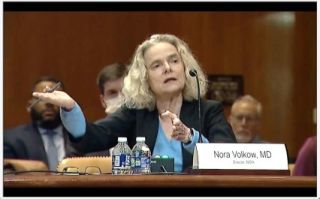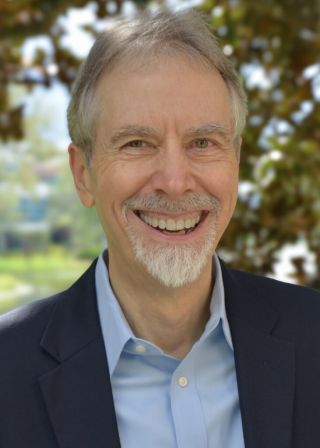Addiction
Why Can't U.S. Doctors Prescribe Methadone for Opioid Use Disorder?
Many addiction experts support wider methadone access.
Updated September 6, 2024 Reviewed by Gary Drevitch
Key points
- Methadone maintenance therapy is proven safe and effective long-term treatment for opioid addiction.
- Studies show that taking methadone reduces the likelihood of an opioid overdose death.
- Many addiction medicine physicians support liberalization and improved methadone access.
Methadone, a proven detoxification medication, as part of methadone maintenance therapy (MMT), is an effective long-term treatment for people with opioid use disorders (OUDs). Studies show people taking methadone are roughly 60% less likely to die of opioid overdoses. Many people with OUDs could benefit from methadone treatment. Yet outdated rules and regulations make it virtually impossible for people with an OUD to receive a prescription for methadone directly from their physicians. Nor can they obtain methadone treatment from the hospital or fill a prescription for methadone at their neighborhood pharmacy. Methadone, by contrast, has been available by prescription in Canada since 1963, Great Britain since 1968, and Australia since 1970.
Nora Volkow, the director of the National Institute on Drug Abuse, has said, “Methadone, the oldest and still one of the most effective medications in our OUD treatment toolkit, remains siloed … it is time to make this effective medication more accessible to all who could benefit.” With more than 80,000 opioid overdoses occurring each year, we need to do better.

Buprenorphine, an opioid, can currently be prescribed for OUD by physicians. The prescription is picked up at a pharmacy and taken in the patients’ home; however, comparable access to methadone remains much more difficult. Recent legislation allowed MMT doctors to prescribe methadone to be taken in their clinics in larger doses, and allow “take-home” medication for patients in those clinics, reducing the number of days patients traveled back and forth to MMT offices. Calls to let doctors prescribe methadone like buprenorphine are gaining momentum. Doctors are already allowed to prescribe methadone—but only as a treatment for pain, not opioid use disorder. Sens. Ed Markey (D-Mass.) and Rand Paul (R-Ky.) introduced a bill in 2023 allowing doctors to prescribe methadone directly to patients for OUD. The American Society of Addiction Medicine (ASAM) endorses the Markey-Paul proposal.
David Fiellin of the Yale School of Medicine is currently comparing buprenorphine to methadone. According to Fiellin, “While we do have hints from the scientific literature that methadone has better outcomes with respect to retention in treatment and decreases in illicit drug use, we actually don’t have that literature in patients who are primarily using fentanyl.”

Reducing Stigma
Volkow says it is important to reduce negative views encompassing MMT. Dr. David Courtwright, a professor at the University of North Florida, said, “There is a general perception that buprenorphine is ‘methadone lite’ – safer to use and less prone to diversion. How much of that perception is grounded in science and how much in marketing I’m not now prepared to say. What I can tell you with assurance is there’s a history of concern about methadone diversion.” While these might have been valid concerns in 1970s, the recent COVID-19-related liberalization did not cause diversion, illicit drug use, or overdoses
Regulatory Reforms and Telemedicine
With mandatory dosing in the clinic, MMT is time-consuming, with long drives back and forth, but such extensive MMT rules and regulations make little sense today. Adding telemedicine, medical, and psychiatric treatments to MMT would make sense. Recent metanalysis has shown that adding psychosocial intervention to MMT significantly improves the nonuse of problem opioids and retention in treatment. Researchers found that the best substance use disorder (SUD) treatment practices should include pharmacotherapy, cognitive-behavioral therapy (CBT), or other evidence-based psychotherapies.
Limits on What Private Physicians Can Prescribe to Patients with OUDs

Stuart Gitlow, former President of the American Society of Addiction Medicine (ASAM), says the situation with buprenorphine for the past 20 years was: “We prevented our addiction specialists from treating the vast number of patients with opioid use disorder by limiting the number of patients to whom they could prescribe buprenorphine, one of the gold standards for this population. The limitation was finally seen as a failure and was removed only recently. But there’s another gold standard, methadone, at least of equal utility and more effective in some individuals with OUDs. And there, addiction specialists working in their private offices don’t have a limitation; they have a complete ban.”
Gitlow adds, “Admittedly, methadone has potential risks associated with it, more so than buprenorphine, and physicians need to take greater care prescribing it. But we would expect addiction specialists to be aware of those risks, to take greater care, and prescribe reasonably, just as we expect pain specialists to do when they prescribe methadone to patients. Why are we not allowing them to prescribe a lifesaving treatment with known risks and benefits to their patient population? Why are we stigmatizing our patients with addiction by not permitting them to access medically necessary treatment from the physician of their choosing? It seems illogical.”
Rehabs and buprenorphine, not MMT, were and are the first choice for celebrities, politicians, physicians, and businesspeople. Legendary guitarist Eric Clapton battled heroin addiction in the 1970s. He sought rehabilitation and, in the ‘90s, founded Crossroads, a rehab facility in Antigua. Clapton and other celebrities with OUDs choose personalized OUD care over MMT. After years of drug and alcohol addiction, Elton John, an advocate for addiction recovery, sought private treatment and has been sober since the early 1990s. Actor Robert Downey Jr. battled severe drug addiction in the 1990s. He's been sober for 20-plus years, attributing his career resurgence to his recovery. Sober since 1999, Jamie Lee Curtis describes her recovery as the single greatest accomplishment of her life. Kelly Osbourne, in recovery since 2017, has been open about her struggles with prescription drug addiction and the challenges of staying sober, using her platform to encourage others facing similar battles.
Celebrities have shown everyone else what addiction looks like and what to do about it by sharing their treatment and recovery on television, magazines, and online. Celebrity treatment hot spots became attractive places to go. Others ask their physician where they would go if they had an OUD. Many physicians do go to private rehabs and expert-led treatment programs where they might be prescribed buprenorphine; physician addicts are rarely (if ever) treated with methadone. This has created a peculiar situation in which physicians vote with their feet but refer some patients for methadone—just not their family, friends, and colleagues.
Summary
MMT programs have helped hundreds of thousands of patients with OUDs since first reported by Dole & Nyswander in the ‘60s. But many more people could be helped, and more fentanyl deaths and overdoses prevented. Physicians should prescribe methadone for OUD just as they can prescribe buprenorphine. Although MMT has been lifesaving for thousands of individuals, it is not a cure. SUD and psychiatric comorbidities, especially issues with psychostimulants and depression, respectively, exist among people with OUDs, and if untreated, these comorbidities undermine patient recovery.
References
Liu C, Li Y. Psychosocial combined with methadone maintenance treatments versus methadone maintenance treatments alone for treatment of opioid use disorder: A meta-analysis. J Addict Dis. 2024 Apr-Jun;42(2):126-135. doi: 10.1080/10550887.2022.2158664. Epub 2023 Jan 6. PMID: 36607171.
Lee YK, Gold MS, Blum K, Thanos PK, Hanna C, Fuehrlein BS. Opioid use disorder: current trends and potential treatments. Front Public Health. 2024 Jan 25;11:1274719. doi: 10.3389/fpubh.2023.1274719. PMID: 38332941; PMCID: PMC10850316.
Samet JH, Botticelli M, Bharel M. Methadone in Primary Care - One Small Step for Congress, One Giant Leap for Addiction Treatment. N Engl J Med. 2018 Jul 5;379(1):7-8. doi: 10.1056/NEJMp1803982. PMID: 29972744.
Merlo LJ, Campbell MD, Skipper GE, Shea CL, DuPont RL. Outcomes for Physicians With Opioid Dependence Treated Without Agonist Pharmacotherapy in Physician Health Programs. J Subst Abuse Treat. 2016 May;64:47-54. doi: 10.1016/j.jsat.2016.02.004. Epub 2016 Feb 13. PMID: 26971079.
Ray LA, Meredith LR, Kiluk BD, Walthers J, Carroll KM, Magill M. Combined Pharmacotherapy and Cognitive Behavioral Therapy for Adults With Alcohol or Substance Use Disorders: A Systematic Review and Meta-analysis. JAMA Netw Open. 2020 Jun 1;3(6):e208279. doi: 10.1001/jamanetworkopen.2020.8279. PMID: 32558914; PMCID: PMC7305524.




